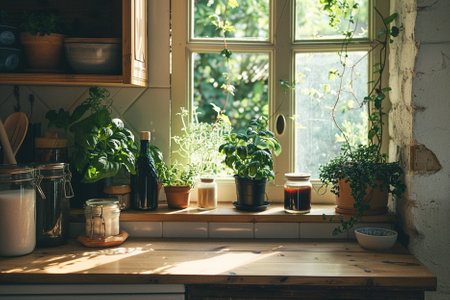Introduction to Common Indoor Plant Pests
If you’ve ever brought a new plant home to brighten up your apartment or city balcony, you might have noticed some unwelcome visitors along the way. From bustling Brooklyn lofts to sunny San Francisco studios, American homes are prime real estate for a host of indoor plant pests. These tiny intruders—think spider mites, fungus gnats, mealybugs, and aphids—can quickly turn your lush urban jungle into a battle zone. For urban gardeners who love their green spaces but have limited room or ventilation, keeping an eye out for these common pests is essential. Left unchecked, they can spread rapidly from one plant to another, especially in compact living environments where humidity and warmth give them the perfect conditions to thrive. Understanding what pests you’re likely to encounter is the first step in protecting your leafy friends and making sure your indoor oasis stays healthy and beautiful year-round.
Spotting Infestations: Signs to Watch For
Living in a small apartment or managing a cozy urban balcony garden means your indoor plants are often right in the heart of your daily life. That’s why catching pest problems early is essential—not just for your greenery, but for your space, too! Here’s how you can identify the earliest warning signs of common indoor plant pests before they become a major headache.
Key Signs Your Plant Has Unwanted Guests
| Pest Warning Sign | What It Looks Like | Where to Check |
|---|---|---|
| Sticky Leaves | Leaves feel tacky or look glossy as if sprayed with syrup | Leaf surfaces, especially underneath and near new growth |
| Yellowing Leaves | Leaves turn yellow and may drop off; sometimes patchy discoloration | Lower leaves or entire plant if infestation is advanced |
| Webbing | Fine, silky webs connecting stems or under leaves | Between leaf joints, undersides of leaves, corners of pots |
Other Early Indicators to Look Out For
- Tiny moving dots—especially around fresh buds or leaf joints (could be spider mites or aphids)
- Mysterious holes or chewed leaf edges (suspect caterpillars or beetles)
- Tiny black spots (insect droppings) on furniture beneath your plants (look out for thrips or scale insects)
Why Early Detection Matters in Small Spaces
Pest populations multiply fast indoors because there are fewer natural predators. In a compact apartment or on an urban balcony, one infested plant can quickly lead to a widespread problem. Early detection means less disruption to your home and healthier plants overall.
![]()
3. Organic Methods for Dealing with Aphids
If you’ve spotted clusters of tiny green, black, or white insects on your houseplants, you’re probably dealing with aphids—a common nuisance for urban gardeners and balcony plant lovers. Fortunately, there are several natural and eco-friendly solutions that can help control aphid populations without compromising your indoor air quality or harming your favorite foliage.
Soap and Water Spray
A simple yet effective method is mixing a few drops of mild liquid dish soap with water in a spray bottle. Mist the affected leaves, making sure to cover both tops and undersides. The soapy solution breaks down the aphids’ protective coating, causing them to dehydrate and die. Rinse plants with clean water after a few hours to avoid any residue buildup.
Neem Oil Application
Neem oil is a popular organic pesticide used in many American households. Dilute neem oil according to package instructions and apply it directly to infested areas using a spray bottle. Neem not only repels aphids but also disrupts their life cycle, preventing future outbreaks—plus, it’s safe for use indoors around pets and kids when used as directed.
Invite Natural Predators
Lacewings and ladybugs love snacking on aphids! While releasing these beneficial insects might sound more like an outdoor gardening tip, some urban gardeners introduce small quantities into enclosed balcony gardens or greenhouses. If thats not feasible, encourage local predators by keeping your indoor garden pesticide-free and occasionally placing potted herbs outdoors during warm weather.
Physical Removal
For small infestations, simply wipe aphids off leaves with a damp cloth or rinse them away under a gentle stream of water in the sink or shower. This hands-on approach works well for compact city apartments where every plant counts and space is at a premium.
With these organic methods, you can maintain a healthy, pest-free indoor oasis while keeping your home environment safe and chemical-free—the perfect solution for any modern plant parent living in the heart of the city.
4. Battling Spider Mites in Urban Indoor Gardens
Spider mites are tiny but mighty pests that can quickly wreak havoc in small city apartments and urban indoor gardens. Their barely visible size makes them hard to spot until your beloved plants start showing yellow speckles, webbing, or dropping leaves. Don’t worry—there are practical, organic strategies you can use to keep spider mites at bay, even when you’re gardening in tight spaces on a high-rise balcony or a sun-drenched city windowsill.
Spotting Spider Mite Infestations
Regular plant check-ups are crucial for early detection. Focus on the undersides of leaves, where these pests love to hide. If you notice fine webbing, stippling, or dusty-looking leaves, it’s time to act quickly.
Organic Solutions for City Dwellers
| Method | How to Use | Best For |
|---|---|---|
| Neem Oil Spray | Mix 1 tsp neem oil with 1 quart water + mild soap. Mist leaves (especially undersides) every 5-7 days. | Apartments with good ventilation; works for most houseplants. |
| Rubbing Alcohol Wipe | Dilute rubbing alcohol (1:4 ratio with water). Dab affected areas with a cotton pad. | Small infestations; ideal for those short on space and needing quick results. |
| Shower Rinse | Place plants in your shower and gently spray foliage with lukewarm water to dislodge mites. | Sturdy plants; easy for city dwellers with bathroom access. |
| Lacewing or Ladybug Release | If you have a larger indoor garden or greenhouse setup, release beneficial insects that eat spider mites. | Larger urban setups, community indoor gardens, or sunrooms. |
Extra Tips for Tight Spaces
- Avoid overcrowding: Good air circulation makes it harder for mites to spread.
- Quarantine new plants: Isolate new purchases before adding them to your collection.
- Wipe down surfaces: Clean shelves and pots regularly to remove eggs and webbing.
- Stay consistent: Organic controls work best with repeated application—set a reminder!
Your City Sanctuary Can Stay Pest-Free!
You don’t need harsh chemicals to enjoy lush greenery in your city apartment. With vigilance and these organic tricks tailored for small-space living, you can outsmart spider mites and keep your indoor jungle thriving all year long.
5. Dealing with Fungus Gnats: Safe and Sustainable Approaches
Understanding Fungus Gnats in Urban Spaces
Fungus gnats are tiny, mosquito-like insects that thrive in the damp soil of indoor plants, especially common on city balconies and sunny windowsills. While their larvae can damage roots and stunt plant growth, adult gnats are mostly a nuisance, buzzing around your cozy urban retreat.
Home Remedies for Immediate Relief
Let Soil Dry Out
Fungus gnats love moist environments. Allowing the top inch of your potting mix to dry out between waterings disrupts their life cycle and encourages healthier plant roots—a win-win for small-space gardeners.
Sticky Traps
Yellow sticky traps, easily found at local garden centers or online, can be placed near affected pots. They’re discreet enough for apartment décor and effectively catch adult gnats before they lay more eggs.
Cinnamon Dusting
Sprinkle ground cinnamon (a natural antifungal) on the soil surface. It helps suppress fungus growth, which is what gnat larvae feed on—plus, it adds a subtle scent to your home jungle!
Preventive Tactics for City Gardeners
Avoid Overwatering
Set a reminder or use self-watering planters to prevent soggy soil—a common problem on busy urban schedules. Well-drained pots with saucers are key for healthy balcony or windowsill plants.
Bottom Watering
Water your plants from the bottom up by placing pots in a tray of water and letting them soak for 15-20 minutes. This keeps the surface dry and less attractive to egg-laying gnats—perfect for compact indoor setups.
Sterilize Potting Mix
If you’re repotting or bringing in new plants, use fresh, sterile potting mix to avoid introducing gnat larvae into your space. Many American gardeners bake their soil at 180°F (82°C) for 30 minutes as an added precaution.
Urban Gardener’s Tip:
Add a thin layer of decorative sand or fine gravel atop your potting mix. It dries quickly after watering, creating a physical barrier that deters fungus gnats without compromising your modern city aesthetic.
6. Prevention and Maintenance Tips for Healthy Indoor Plants
Keeping your city apartment green and pest-free is all about consistent care and smart space management. Start by establishing a regular inspection routine: check the undersides of leaves, stems, and soil for early signs of pests every week. This proactive habit helps you catch issues before they spread, especially in small urban spaces where plants are often close together.
Maximize Airflow & Light
Good air circulation is key to preventing mold and discouraging pests like spider mites. Space your plants thoughtfully—even on a compact balcony or windowsill garden—using vertical stands or wall-mounted shelves to give each plant breathing room. Rotate your pots every few weeks to ensure even light exposure, which strengthens plants’ natural defenses.
Keep it Clean
Dust leaves regularly with a damp cloth and trim away dead foliage promptly. Old leaves and debris can harbor eggs or larvae, so keeping surfaces tidy reduces hiding places for common indoor invaders like fungus gnats or aphids. If you use saucers, empty excess water after each watering session to prevent soggy soil.
Smart Watering & Feeding
Overwatering is a top cause of both root rot and pest attraction in city homes. Stick your finger into the soil to check moisture before watering, and choose well-draining pots for your indoor jungle. Use organic fertilizers sparingly—healthy plants are less likely to become pest targets, but over-fertilizing can invite trouble.
Quarantine New Arrivals
Before introducing new greenery from your local nursery or plant swap, isolate them in a separate area for at least a week. This gives you time to monitor for hitchhiking pests or diseases without risking your established collection.
Stay Organic & Eco-Friendly
Whenever possible, opt for non-toxic pest prevention methods: introduce beneficial insects like ladybugs if needed, use neem oil sprays occasionally as a barrier, and encourage natural predators by opening your balcony doors on sunny days. By combining these simple habits with space-saving solutions, you’ll enjoy a vibrant indoor oasis that thrives year-round—no matter how tight your city quarters may be.


